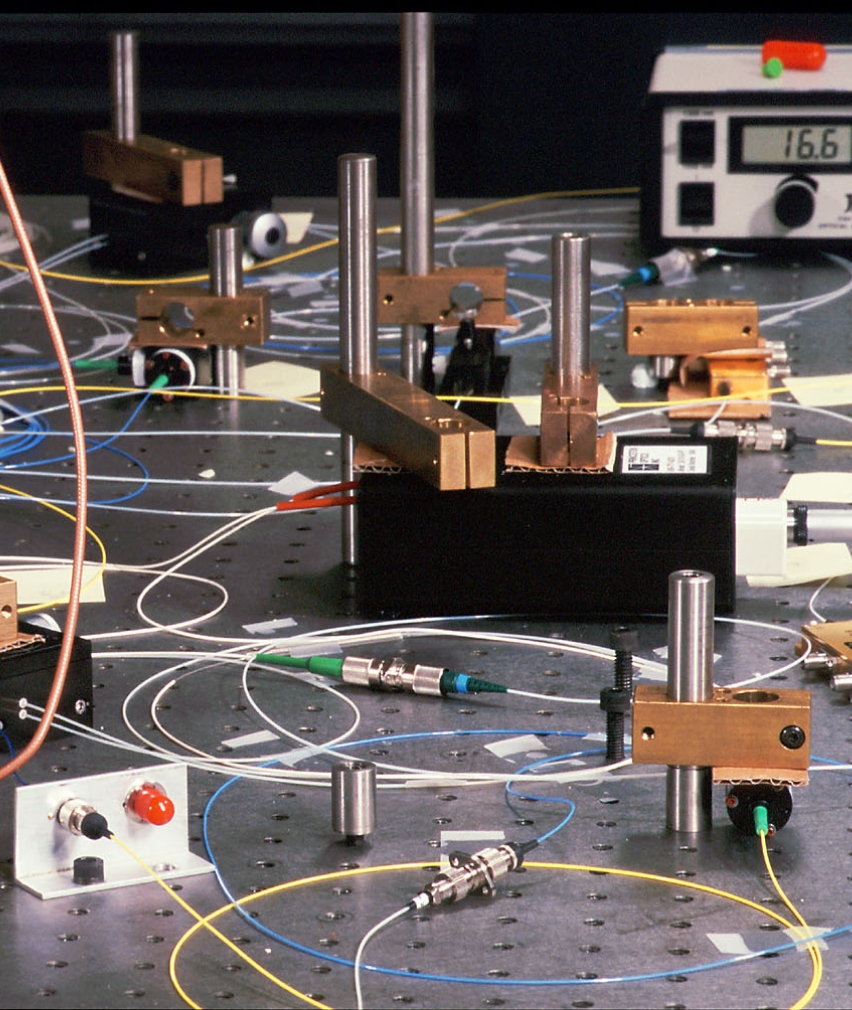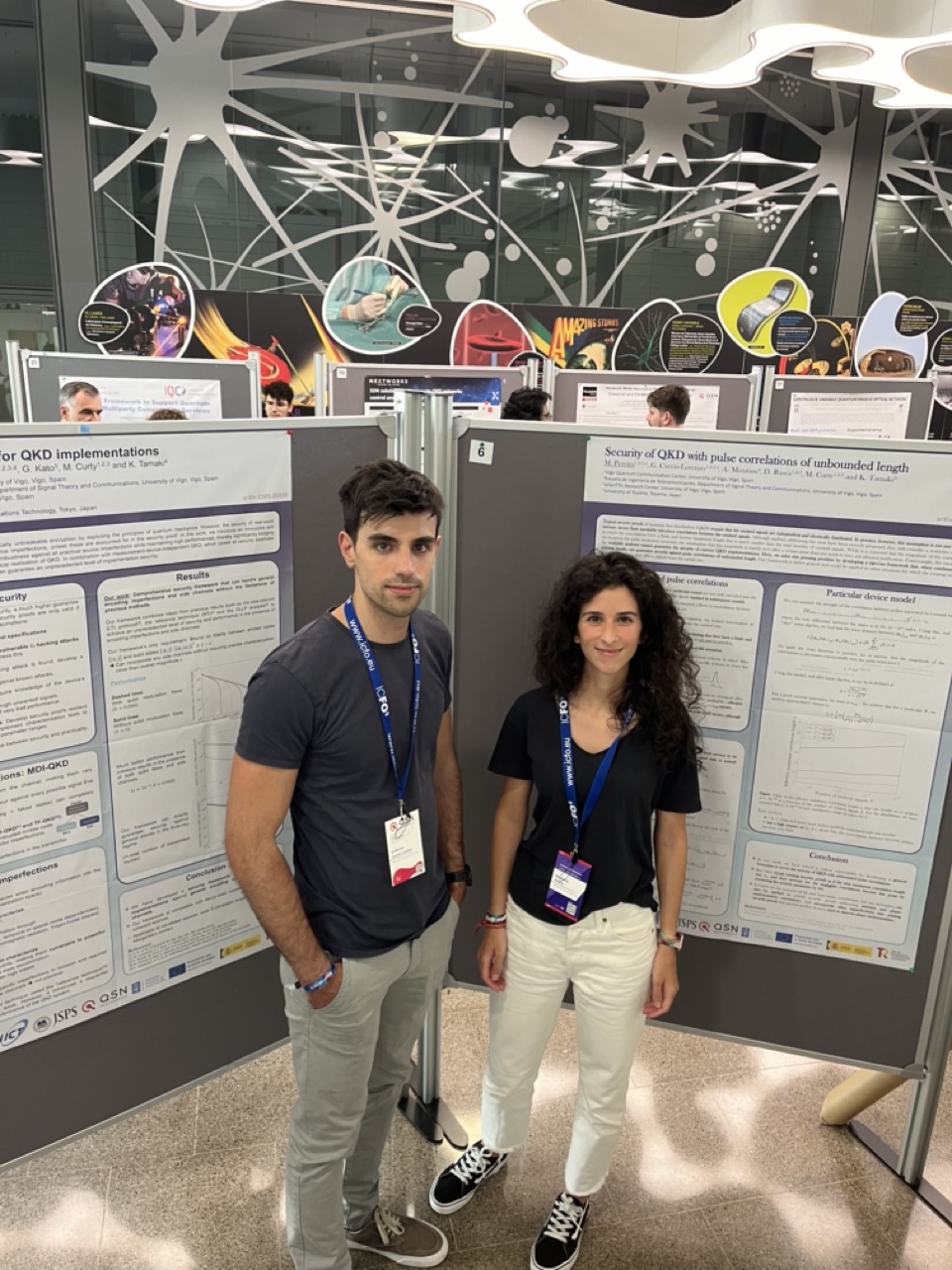QKD with
intensity correlations

In the last years, quantum key distribution (QKD) has become the most mature application of quantum information science. QKD links and networks are being deployed in different parts of the world, and a number of companies provide QKD services and equipment. Nevertheless, despite this progress, various challenges must be addressed in order to achieve the widespread adoption of QKD.
In particular, aiming to enhance the key generation performance of QKD implementations, it is very desirable to boost the repetition rate of the laser sources in QKD transmitters. Nevertheless, for clock rates of the order of GHz, intensity correlations between succeeding pulses appear, possibly opening a security loophole. To be precise, in the absence of ideal single-photon sources, most QKD protocols use attenuated lasers that operate emitting phase-randomised weak coherent pulses. These sources allow QKD users to implement the so-called decoy-state method, a standard procedure that enables a tight estimation of the secret key length of a QKD session by means of using multiple intensities for QKD transmission. Unfortunately though, the presence of intensity correlations invalidates the central assumption of the decoy-state method, namely, that the photon-number detection statistics do not depend on the intensity of the laser. This being the case, the question arises of how to account for arbitrary intensity correlations in the security analyses of QKD, a question for which existing results are notably restricted.
In two consecutive works, the Quantum Communication Theory Group at the VQCC, in collaboration with researchers from the University of Toyama (Japan), solved this pressing problem by developing the missing security analysis for decoy-state QKD with arbitrary intensity correlations, thus restoring the security of high-speed QKD systems.
Reference
V. Zapatero, A. Navarrete, K. Tamaki, M. Curty “Security of quantum key distribution with intensity correlations”, Quantum 5, 602 (2021).
X. Sixto, V. Zapatero, M. Curty, “Security of decoy-state quantum key distribution with correlated intensity fluctuations”, Physical Review Applied 18, 044069 (2022).















